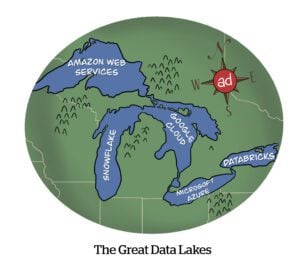Many retail media solutions offer buyers basic metrics like impressions, click-through rates and return on ad spend (RoAS) for their onsite media. However, some may not provide any metrics at all.
Consequently, there is a lot of talk about the need to standardize retail media measurement.
Organizations like the IAB and ISBA are playing a commendable role in driving industry discussions and offering thought leadership. However, until universal standards are set and adopted by retailers, marketers need to ask some boring yet fundamental questions about the metrics currently in use if they want to assess and compare performance across retailers.
Here are the questions every buyer should ask their retail media partners about how they’re measuring campaign effectiveness.
The simple questions
1. What is an impression? According to IAB standards, an impression occurs when an advertisement is rendered on the website, irrespective of whether the customer sees it. This differs from a “viewable impression,” which measures when the customer actually sees the advertisement.
Retail media solutions rarely break down “viewable impressions” into a separate metric. Some retailers report only “viewable” impressions under their impressions metric, while others don’t.
2. Which clicks are counted? The IAB standards identify two types of clicks: “click-through,” which leads to a web page redirect, and “in-unit,” which does not result in a redirect.
In nontechnical parlance, this could be interpreted simply to mean a click anywhere on the advertisement.
On most ecommerce websites, this implies three types of relevant clicks: an add-to-basket click (this matches the IAB’s “in-unit” click type), a click to go to the product detail page or a click on a display ad that directs the user to another webpage containing the advertised products. The latter two match IAB’s “click-through” click type.
These are the clicks that matter. Retailers should not count any other clicks, such as right clicks on the advertisement.
3. How many clicks are counted per impression? Many retailers count a maximum of one click per impression, even if the customer clicks four times on an advertisement to add four products to their basket. However, this practice may not be universal.
4. Are sales counted based on ad click or ad view? Retailers can attribute sales to a campaign if the customer viewed the campaign or, alternatively, if they clicked on it.
View-based attribution is common for display media, whereas click-based attribution is common for sponsored products. However, some retailers use view-based attribution for all their media, even sponsored product placements.
5. What is the attribution window? Most retailers choose between a seven-day and a 14-day window. For example, in a seven-day window, the retailer can attribute any sale that happens within seven days of engaging with the ad (e.g., click) to the campaign.
Some retailers choose longer attribution windows. However, unless they are measuring and communicating the lifetime value of new customers, attributing sales beyond 14 days simply serves to inflate RoAS.
6. Is brand halo effect considered? Sales attributed to the campaign can be either for the products advertised in the campaign or for all the products within the brand, including those that did not feature in the advertisement. This is known as the “brand halo.”
7. Is bot activity filtered? Most retail websites are prone to significant bot activity for use cases like web scraping. Yet most retail media programs are not mature enough yet to filter out engagement from bots. Bot activity will inflate the campaign’s relevant impressions and clicks, as well as media cost.
More complex questions
These questions require an understanding of the nitty-gritty of RoAS modeling but are equally important.
8. Is first-checkout, last-checkout or delivered attribution applied? Particularly in grocery ecommerce, customers can edit their orders multiple times before their delivery date, and they need to check out each time they edit their order. A first-checkout attribution only includes purchases from the customer’s first checkout; it ignores subsequent additions or deletions from the basket while calculating RoAS.
Customers sometimes add more expensive items to their first checkout to hit the minimum order threshold needed, then remove them in subsequent checkouts. So the first checkout approach typically overestimates the RoAS of high-priced items like wine, while underestimating the RoAS of other items.
A last-checkout attribution only attributes sales of those products that stay in the last checkout of the customer. However, there is sometimes a long lag between first checkout and last checkout. This happens during Christmas in the UK, when customers reserve their delivery slots and make their first checkout three to four months in advance. In that case, the advertisers would only see live data on clicks for their campaigns, while the RoAS results would come with a long lag.
Finally, delivered basis goes one step beyond last checkout to include only those items that were finally delivered to the customer. Delivered basis is most accurate, as it attributes only those units that were actually bought by and delivered to the customer, excluding out of stock items that required substitutions (which is common in grocery delivery). However, as with the last-checkout method, there can be a long lag in RoAS results.
9. Multi-touch or duplicated attribution? Most retailers who provide RoAS attribute a single sale to multiple campaigns. If a customer saw five different ads powered by the same retailer for a product and bought only one unit, then a retailer may attribute a full unit to each of the five campaigns. I call this duplicated attribution.
This differs from attributing the unit to only one of the five ads (using first-click or last-click attribution) or between the five ads using appropriate weights, such as length of time spent on each ad and recency of each touch point (known as multi-touch attribution).
Now that you know what questions to ask, you’ll be better equipped to make sense of your retail media campaign performance. The real test, however, will be whether your retail media partners know the answers.
“Data-Driven Thinking” is written by members of the media community and contains fresh ideas on the digital revolution in media.
Follow Keshav Parthasarathy and AdExchanger on LinkedIn.
For more articles featuring Keshav Parthasarathy, click here.
















